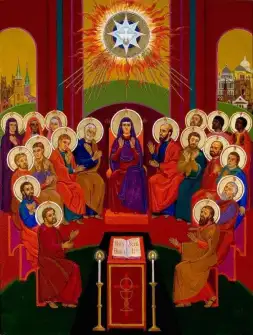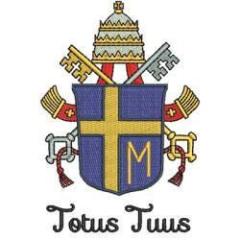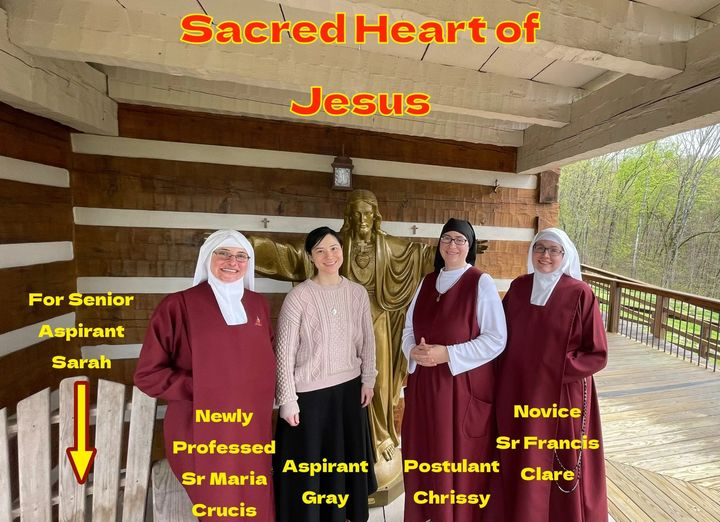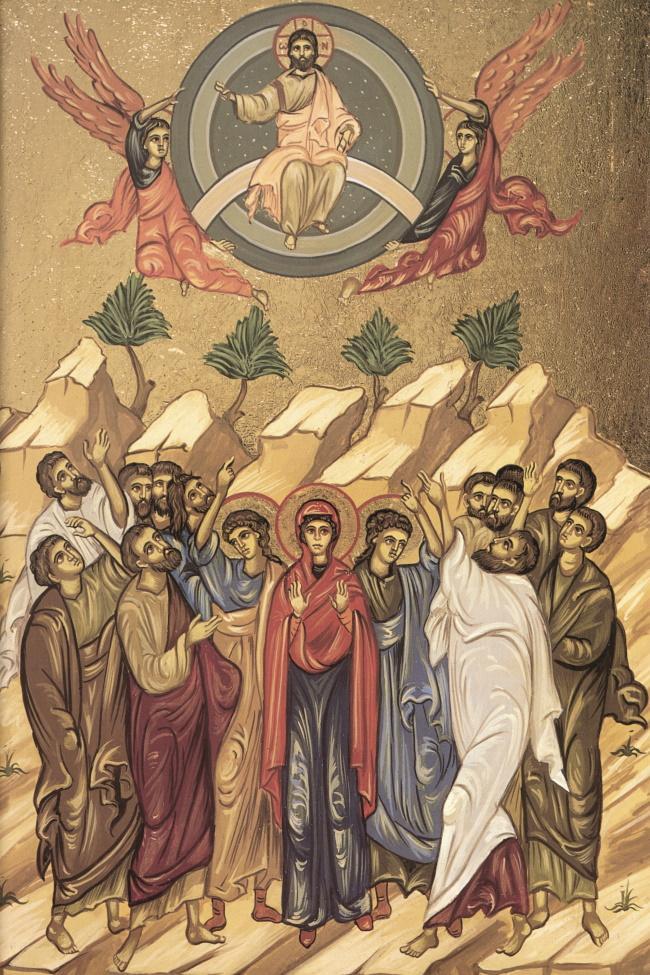All Activity
- Past hour
-
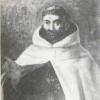
ANALYSIS: The Canonical Background of the Situation of the Arlington Carmel BY SISTER GABRIELA OF THE INCARNATION, O.C.D. = MAY 7, 2024
graciandelamadrededios replied to graciandelamadrededios's topic in Catholic Vocation Station
I have no questions that the Dicastery has acted in good faith, however, what I do not understand is the same office has not responded to the request of the Nuns regarding the Bishop who have repeated violated the privacy of the nuns and has abused them. The decree has stated that his role as Pontifical Commissary has ended yet, he will be working closely with the Association president and I quote: "I will work closely with her, providing counsel, resources, and support as needed. As is my responsibility as the local bishop of the nuns under canon law and the Rule and Constitutions of the Carmelite Order, I will oversee at the appropriate time the election of new leadership of the Arlington Carmel given the expiry on January 8, 2024, of Mother Teresa Agnes’ term as Prioress, as well as the terms of the offices of subprioress and councillors." I find this contradictory and confusing - a conflict of interest. For me, it should be the Dicastery should direct the Association President; The Holy See through the Dicastery should provide resources, counsel and support to the Association President. How can be this Bishop be objective when he is the one who started persecuting and abusing the Nuns? - Today
-

ANALYSIS: The Canonical Background of the Situation of the Arlington Carmel BY SISTER GABRIELA OF THE INCARNATION, O.C.D. = MAY 7, 2024
graciandelamadrededios posted a topic in Catholic Vocation Station
“I have a question for you. If someone on the outside appoints a superior for your Carmel, without the knowledge or consent of any of the nuns, how would this go down?” Over the past year, there have been various articles and comments concerning the situation of the Carmelite Monastery in Arlington, Texas. Since those of us who are not directly involved in the situation only “know” what is reported in various sites, it is virtually impossible to form any clear idea of what is involved. However, the Arlington Carmel did not come into existence only during the past year, and it has more of a background than has been presented in recent articles. It was officially established on Oct. 2, 1958, in Fort Worth, Texas. In 1984, the monastery moved to Arlington, and in 2008, they celebrated “the 50th Anniversary of our Foundation. May God be praised for His blessings to us during these may years in the Diocese of Fort Worth.” Canonically, each Carmelite monastery is under either the jurisdiction of the Order of Discalced Carmelites, or under the jurisdiction of the local ordinary. The “local ordinary” is the bishop in whose diocese the monastery is established. In order to make a foundation, a Carmel needs, among other things, the permission of the local ordinary. According to the Official Catholic Directory, the Arlington Carmel is established in the Diocese of Fort Worth, Texas, and the bishop of Fort Worth is the “local ordinary.” Historically, most Discalced Carmelite monasteries in the United States are under the jurisdiction of the bishop in whose diocese they are established. The United States of America came into existence on July 4th, 1776, with the 13 original states. The Discalced Carmelite Nuns were the first institute of religious women to make an establishment in the original states, arriving in New York on July 2nd, 1790 and then establishing the first American Carmel at Port Tobacco, Maryland. There were no Carmelite Friars in the USA at that time, and the Carmel was entrusted to the vigilance of the local bishop. Over the next 200 years, Carmels were founded from various places around the globe. There are now some 50 Discalced Carmelite Monasteries of Nuns in the United States. The physical history of the various Carmels forms a fascinating account, with Carmels coming to the USA primarily from Europe, but also from Mexico because of the persecution of the Catholic Church that arose there at various times. The canonical history, especially since Vatican II, is more to the point in the present situation. The Second Vatican Council demanded that religious institutes return to the original charism of their founders and foundresses and update their constitutions accordingly. Various “barnacles” had adhered over time to the original inspiration and with the sanction of “custom” were considered to be part of the original charism. For example, the Constitutions of Alcala were approved in March 13, 1581, shortly before St. Teresa’s death. These Constitutions include the article mandating the “black fast,” i.e. abstinence from eggs and dairy products, during certain days and periods of the year. (The Nuns already abstain from meat except in need of necessity, for this is prescribed in the Rule of St. Albert, which dates from ~ 1208). Teresa did not want this prescription for the “black fast” in the Constitutions; it had been added by the Dominican Padre Fray Pedro Fernandez and she was unable to remove it (See letter #376 to Padre Jeronimo Gracian). Returning to her original inspiration would certainly bring up the question of whether the “black fast” was part of her original inspiration. There are other “barnacles” that had adhered to the life of the Carmelite Nuns. A Passionist priest, a good friend of ours, visited a Carmel in Spain and had a meeting in the speakroom with all the community. He noticed that whenever a nun wanted to say something in the conversation, she slipped off her stool and knelt on the floor and then sat back down on her stool when she had finished speaking. He had visited a number of Carmels in different countries and had never witnessed this custom. He inquired about it and was told that it dated back to the time of the Foundress, St. Teresa of Jesus. Later, he had the opportunity to talk privately with one of the older nuns, who told him that it was the previous prioress who had introduced that custom. My favorite “barnacle” concerns the Friars. It was the custom, at the end of the day, for one of the novices to escort the Father General up to his room carrying a lighted candle. This was an excellent precaution in the 16th, 17th, and 18th centuries, but in the 20th century, the novice had to make sure that, besides extinguishing the candle, that he also turn off the electric lights! Updating the Constitutions of the Discalced Carmelite Nuns proved to be an arduous procedure, and it was soon clear that no single text would be approved by all the Carmels. On December 8, 1990, Pope St. John Paul II approved the text of what came to be known as the 1990 Constitutions, and on September 17, 1991, he also approved the text known as the 1991 Constitutions. The Discalced Carmelite Nuns thus had two approved and valid texts of Constitutions. My Community immediately chose the 1990 Constitutions, without even studying them. However, some years later, we found that the 1990 Constitutions omitted the first article of the Constitutions of Alcala: that the Nuns are subject to the “Most reverend Father General of the Order and the Provincial of the province of the Discalced Carmelite Friars.” (You can find a copy of both sets of Constitutions here.) When we realized that, since we want to follow St. Teresa’s desire that the Friars and the Nuns constitute one family, we took various steps, and on March 3, 2013, we changed over to the 1991 Constitutions, and on March 4, 2022, we changed from being under the local ordinary, the bishop of Metuchen, to being under the jurisdiction of the Order. We have now come home as Teresa wanted. The Arlington Carmel took a rather different route. To the best of my knowledge, they were never under the Order, but had always been under the bishop. They had chosen the 1991 Constitutions, but in 2020, they changed over to the 1990 Constitutions, (cf. and email exchange with various members of the Order), thus severing all juridical bonds with the Order. Also as of 2020, they applied to join the newly established Christ the King Association and were accepted. With those steps, their present situation, canonically speaking, is of their own choosing. They are under the bishop, with the 1990 Constitutions, and a member of the Christ the King Association. Every Carmelite Nun pronounces the three vows of religion: poverty, chastity and obedience. Those in temporary profession, pronounce these vows for a specific period of time, usually for three years, and those who request it and who are admitted to solemn profession, pronounce them “until death.” The formulas of profession are to be found in chapter XVIII of the 1990 Constitutions, #132. The profession for solemn vows is this: “I, Sister N. of N. (giving her religious name and her title, i.e. Sr. Gabriela of the Incarnation) make my solemn profession and I promise obedience, chastity and poverty to God our Lord, to the Most Blessed Virgin Mary of Mount Carmel and to you, Reverend Mother Prioress and to your successors, according to the primitive Rule of the Order of Discalced Carmelites and our Constitutions, until death.” Please note the last part of the vow: “according to the primitive Rule of the Order of Discalced Carmelites and our Constitutions.” “Our Constitutions,” for the Arlington Carmel, are the 1990 Constitutions. A study of the 1990 Constitutions shows the place of the local ordinary in his vigilance over the life of the Nuns. At the end of the 1990 Constitutions, there is an Analytical Index, which lists the articles pertaining to various subjects. There are two entries concerning the bishop: BISHOP: Monasteries entrusted to his vigilance: 133, 138, 140, 253, 255. See ORDINARY, LOCAL. And ORDINARY, LOCAL: Is to defend the autonomy of the monasteries: 135; presides at the election of the Prioress: 148; carries out the visit: 155; can be informed about the observance, the discipline of the monastery and the cloister: 156; gives the habitual consent for the departures of the cloister that the Prioress can authorize: 226; for other departures: 229, 230; to invest capital: 162; once a year he will be shown the account book: 49; can enter the cloister for a just reason safeguarding what is determined in the Constitutions: 235-b; is to be informed about the transfer of a nun to another Institute: 241-c; exclaustrated religious: 246; care and vigilance of to him belongs the confirmation of an indult of departure for a religious of temporary vows: 249. Defending the “autonomy” means making sure that the monastery has the necessary qualities for being “autonomous, that is, for being self-governing (cf. Cor orans #6, #15ff, especially #18). “Autonomous” does not mean “independent.” It means that the community has enough nuns in solemn profession for a valid Chapter (the minimum is six solemnly professed nuns), that it has adequate personnel within the community for government, formation and finances, without needing anyone from outside to come in and manage those areas. Finally, it means that the community is financially stable. Each year, the prioress sends to the bishop the financial report for the past year (#49). She also sends him the yearly requests for permission for necessary persons to come inside the enclosure (workmen and healthcare workers, for example), and for the nuns to leave the enclosure for necessary reasons (doctors’ visits, bank transactions, etc.) (#226) You will also notice that the bishop carries out the “visit.” This is the regular visitation of the community to make sure that all is going well (#155). An important point is #156: the actual text is “The Visitator (i.e. the bishop or the person officially delegated by him to carry out the visitation) has the right to be informed regarding the observance of the norms of the Church which concern contemplative life, religious discipline and the manner in which the norms referring to papal enclosure are observed.” Papal enclosure extends not only to the doors and walls and grates, but also to the means of communication (cf. #236-237) Therefore the use of the means of communication falls under the vigilance of the bishop. Also, the local ordinary can enter the enclosure “for a just cause, and safeguarding what is determined in these Constitutions.” (#235 b) The local ordinary is not the superior of the monastery. He can exercise his authority only according to the articles of the Constitutions. The immediate superior of the monastery is the Holy See: As regards their juridical condition, our monasteries, conserving spiritual unity with the entire Order, have no other major superior above the Prioress, except the Holy See, nor are they associated with the Discalced Brothers in such wise that the Superior General should have any power over them whatsoever. Consequently, they are entrusted to the vigilance of the diocesan Bishop according to the norm of law. (Cf. Can. 615) 134 These monasteries, erected by a formal decree of the Apostolic See, are of Pontifical Right and depend immediately on the same in regards to internal governance and discipline. (Cf. Cans. 589, 593 and 609) This does not mean that above the Prioress there is only Pope Francis. The “Holy See” refers to the episcopal jurisdiction of the Catholic Church and includes the Dicasteries. Since the Arlington Carmel is a religious institute of consecrated life, it depends on the Dicastery for Institutes of Consecrated Life and Societies of Apostolic Life as its immediate superior. It is therefore clear that the chain of authority runs through the local ordinary according to what is laid down in the Constitutions, and the various Dicasteries, especially the Dicastery for Institutes of Consecrated Life and Societies of Apostolic Life. A question addressed to me on SmartCatholics is quoted at the beginning of this article: “I have a question for you. If someone on the outside appoints a superior for your Carmel, without the knowledge or consent of any of the nuns, how would this go down?” I requested a further clarification: “Please define what you mean by ‘on the outside’? Do you mean like the USCCB?” The reply was “Yes or even the local ordinary or the Vatican. Can this be done without even talking to the community?” As is clear from a study of the 1990 Constitutions, the USCCB has no authority over the life of the nuns, unless it is authorized by the Dicastery for Consecrated Life, which, as a department of the Holy See, has supreme jurisdiction over Carmels under the jurisdiction of the bishop. The Dicastery can even change the Constitutions (cf. #258 a-b). Moreover, the local bishop does have considerable authority given him by the Constitutions, and, since the Arlington Carmel requested to join the Christ the King Association, and their request was approved, they are bound by the Statutes of that Association. All this by their own choice. If by some accident, their statutes as a non-profit corporation contradicts in some way their Constitutions, they nevertheless have bound themselves by their vows to follow the Constitutions. In my Community, we have a great veneration for our vows. When we die, we are buried with them in our hands. Since I entered in 1979, we have always renewed our vows as a Community on September 14, the Exaltation of the Holy Cross. This is a common Carmelite custom. We also renewed them on the Solemnity of the Epiphany. Since we changed over to the 1991 Constitutions, we continue to renew them on those dates, but we also renew them on Divine Mercy Sunday. This shows how important we consider our vows for they unite us to God. Sister Gabriela of the Incarnation, O.C.D. Sr. Gabriela of the Incarnation, O.C.D. (Sr. Gabriela Hicks) was born in the Sierra Nevada Mountains, in the Gold Rush country of California, which she remembers as heaven on earth for a child! She lived a number of years in Europe, and then entered the Discalced Carmelite Monastery in Flemington, New Jersey, where she has been a member for forty years. www.flemingtoncarmel.org. -
This is Dolly Parton from 55 years ago, singing her own composition "Mama Say a Prayer." As always, Dolly sings about real life, and sings about it honestly. I'll have another "mama song" tomorrow, and then I'll move on.
-
“There is nowhere you can go that God is not.” “There is nowhere you can go that God is not” is a good reminder for this Day of Pentecost. This feast day marks the official birth of the Church and the explicit mission of the Holy Spirit—for us to tell the world about the Good News of Jesus Christ. The Church of God then, does not have a mission, but the God of mission has a church. This is our job as Christians. We are going to places that God already is—the past, the present, and the future—and God is using us to get across the message that each person on this planet is loved beyond our limited understanding. This is the day where the power of the release of the Holy Spirit, evokes energy pent up, like a runner finally being able to speed off from the starting line or an arrow released from its bow. When we do something in the name of Jesus, great power is unleashed. We are to be lie those trick candles on a birthday cake that, when the world thinks it has blown us out, we come back to shine the light of Christ anew. Think about this: How is our community’s light of Christ resilient in the face of the world around us? We are called to be the hands and feet of Jesus Christ in the world. We affirm we proclaim by word and example the Good News of God in Christ, We seek and serve Christ in all persons, loving our neighbour as ourself? We strive for justice and peace among all people and respect the dignity of every human being” We do all this, with God’s help.” When the Spirit moves in our own lives, one of the immediate reactions is to be perplexed, like some of the people in our story from Acts were. Another reaction is to sneer in disbelief at what is happening, much like some of the other people. Our human minds cannot wrap themselves around what God is doing, even if we are in the midst of God’s action ourselves, just like those in the crowd. And isn’t that still true in this day and age? We want to put God in a box, but God doesn’t work that way. The Spirit is revealed as the life-giving breath of the Father, the Wisdom by which He made all things, as in today’s Psalm. The Spirit blows where it will and, like a woman in the middle of labour, we cannot deny it and we can’t stop it. Sometimes it makes us perplexed. Sometimes it makes us uncomfortable. But always, always the Spirit is pouring out to proclaim God’s glory in the world and it is moving through us so that God’s glory will be revealed. God comes alongside us speaking our language, healing and inspiring us so that we can share God’s love with someone else in their own language. This is the Good News! How has the Holy Spirit blown like the wind in your life? We’ve all had moments where God has sent the Holy Spirit sounding like a violent wind in our lives, upsetting things, moving things, changing things—and we all know how human beings hate change. Yet we can take a page from the disciples’ story and remember that we should always be prepared for God. Be prepared to receive the vivid experience of the Holy Spirit—over and over and over again. God is always doing something new. Like a river of living water, for all ages God will pour out His Spirit on His body, the Church, and so we continue, with God’s help, through the Holy Spirit and in Jesus’ name to spread the fire of God’s love in our broken, hurting world. This is our commission. This is our faith. This is what it means to be a new creation in Jesus Christ. This is Pentecost, the birth of the Church—and we are that Church.
- Yesterday
-
"When Mama Prayed" was written by Paul Overstreet (a very good friend of Merle Haggard) and Rory Lee Feek (such a name!). This recording is by Randy Travis - I've always loved his voice and his attitude. It's not the best or the most interesting song I've posted, but it does show that the role of Mama, and respect given to her faith, are still very much alive in the pop/Gospel traditions.
- Last week
-
Here's Ralph Stanley singing "A Mother's Prayer." I don't know who wrote it or when. I tried looking it up online, but my computer is being unreasonably slow this evening, so I gave up.
-
The PCPAs in Tonopah, AZ have a new postulant: https://desertnuns.com/winter-update
-
Tom T. Hall wrote "Grandma Whistled." It's not a Gospel song as such, but it does indicate that Gospel music used to be just a normal, everyday part of life. I've heard Tom T's original recording, and I like it. But I decided to post a recording by a group called Riverview Gospel Bluegrass of Morrilton, Arkansas. I've never heard of them, but one of them does some mighty fancy whistling in the song's outro.
-
The Archdiocese of Denver ordained six priests on Saturday, May 11, 2024. https://denvercatholic.org/six-new-priests-called-to-a-complete-gift-of-self-in-their-ministry/
-
CARA report on the ordination class of 2024: https://www.usccb.org/resources/Ordination Class of 2024 - report_0.pdf The Executive Report says 475 ordinands were invited to respond to the CARA survey. That leads me to believe that 475 men will be ordained as priests this year, but I could be wrong about that. I'm not sure that CARA invited each and every ordinand in the country to respond, but I think they did. The report has a lot more information, too, about the ages, locations, and backgrounds of the ordinands.
-
The Jesuits will ordain 15 men this year, on June 8th. Eastern Province - 4 priests Midwest Province - 6 priests South Central Province - 2 priests Western Province - 3 priests
-
G1.5 Je vous salut Marie, pleine de grâce, le Seigneur est avec vous, vous êtes bénie entres toutes les femmes et Jésus, le fruit de vos entrailles est béni. Sainte Marie, Mère de Dieu, priez pour nous pécheurs, maintenant et a l'heure de notre mort. Amen
-
In their FB post of April 22, 2024, the Handmaids of the Precious Blood in Tennessee say that they're running out of rooms. They have three women in formation at the moment and two aspirants moving in soon.
-
Mother's Day is past but I don't feel compelled to give up the theme just yet. "I Heard My Mother Call My Name in Prayer" was written in 1919 by E. M. Bartlett and it's been around ever since and been recorded by everybody, too. This is a guy name Galeon Smith - never heard of him! I think he's still alive and recording videos for YouTube. But he does a very straightforward version of the song - nothing fancy, not even any harmony, but clear pronunciation, printed lyrics, and real good mandolin work. I will add, though, that this song includes the Protestant concept that once one has "given one's life to Jesus," one is saved completely and forever, and sin is no longer a problem. It's not a Catholic concept, which is why a lot of Gospel songs are not appropriate for Catholic liturgies or even prayer services, retreats, etc.
-
"Calling My Children Home" was written by three men - Charles Waller, Doyle Lawson, Robert Yates - who were members of the bluegrass group The Country Gentlemen. But when it's sung by Dolly Parton, Emmylou Harris, and Linda Ronstadt, it sounds like it was written from a woman's perspective. It wasn't written as a Gospel song per se, but Christian themes run through it, and it's perfect for Mother's Day.
-
"I Remember Mama" is one of Shirley Caesar's signature songs. Shirley was the youngest of twelve children and lost her father at a young age; her mother raised the children largely on her own. My mother had basically the same experience - 13 children and their father died when the oldest was 19 and the baby was 5 months old, so I have some vicarious insight into that part of the story. At the beginning of the video, the woman standing next to Shirley is her sister Ann, and the other adults in the later shots are her real brothers and sisters. Shirley sings about her mother and about her own conversion experience as a child.
- Earlier
-
The Dominican friars of the Western province ordained 3 priests this year. They ordain deacons in September, so there's nothing to report on that front at the moment. On a side note, the ordaining prelate was Bishop Steven Maekawa, OP, himself a member of the Western Province. He was consecrated the bishop of Fairbanks, AK in October 2023. Of the Fairbanks diocese, Wikipedia says: "As of 2023, the Diocese of Fairbanks had 46 parishes and missions, with 14 priests, to serve 11,876 Catholics, in an area of 409,849 square miles (1,061,500 km2). It is geographically the largest diocese in the United States." Suffice it to say, Bishop Maekawa has his hands full, but he made time to return to San Francisco to ordain his brothers as priests.
-
The archdiocese of Chicago, IL ordained 5 priests, 2 transitional deacons, and 12 permanent deacons this year. The diocese of Joliet, IL ordained 4 priests and 1 transitional deacon this year. No word on permanent deacons.
-
Wikipedia says: "If I Could Hear My Mother Pray Again" (1922) is a popular gospel song written by John Whitfield "Whit" Vaughan (1879–1945), as a tribute to his own mother, Clara Beady Burgess-Vaughan. The words are based on a text by James Rowe, an English settler living in Georgia during the early twentieth century. A 1934 recording of the song by Thomas A. Dorsey was selected in 2007 by the United States' National Recording Preservation Board for preservation in the National Recording Registry.
-
The word “ascension” means to move upward, to be lifted up. In this case, the “ascension” refers to Jesus’ ascent as he was lifted up into heaven at the end of his earthly ministry in the midst of his followers. This event was commonly assumed to have occurred upon the Mount of Olives 40 days following Jesus’ resurrection after he had made many appearances to his followers. It should be noted that the Ascension is one of the few affirmations we make about Jesus’ life in our ancient creeds. In the Nicene Creed, we proclaim that Jesus, “ascended into heaven and is seated at the right hand of the Father.” The Ascension has also been observed universally by the Church since at least the 4th century and it ushers the Church into Pentecost Sunday, when the Church celebrates the coming of the Holy Spirit. One of the things about the liturgical year and worship, is that if one pays attention to the prayers and readings throughout the church year, one can learn and experience all the central teachings of the Christian faith. For instance, the liturgy of the Eucharistic prayer opens with a dialogue that begins with the words, “The Lord be with you… And with your spirit.” The prayer continues with the invitation to those gathered to “Lift up your hearts.” Clergy are taught in seminary to physically lift their arms and hands upward during this prayer in order to convey tangibly and physically this sense of lifting up in a posture of supplication. The people then respond, “We lift them up to the Lord.” The sursum corda ends with giving thanks to God and the prayer then moves into retelling salvation history with worship and thanksgiving to God until the invitation to receive Communion. The goal of this portion of the ancient liturgy is to participate in, essentially, an ascension of the heart, by intentionally and prayerfully lifting up our hearts to God in faith, love, and joy. From a spiritual standpoint, this is a moment to pause and bring our awareness into God’s presence. In that sense, we are called to ascend to God, just as Jesus ascended to God, by lifting up our hearts, our souls, and our deepest selves to God. In this way, our prayer reminds us that the Eucharist is not just about the fact that Jesus descended to the earth to come to us, nor did Jesus merely ascend into heaven, but that he ascended in order to draw us all to God because we too are called to ascend in heart, body, and mind to the Lord. In Christ, by faith through grace, we learn that ascension is a joint effort! In fact, not only is the Eucharistic celebration a joint effort of both descension and ascension, but our entire spiritual journey is a joint effort that involves God coming to us and our responding and coming to God, descending and ascending together, with God working in us and us working with God. In this way, heaven and earth are joined together for the work of God’s Kingdom. When we follow Jesus and experience true ascension, there is a clear and gracious result. Luke’s Gospel account illustrates that result in our reading. Following Christ’s ascension, the text reveals that the disciples experienced three things: “worship,” “great joy,” and “blessing.” This is the same pattern of the Eucharistic prayer, and this is the pattern of the spiritual life. When we ascend and lift up our hearts to God, we too are filled with God’s life-giving, praise, worship, blessing, and joy! Of course, we are called to ascend and lift our hearts to God not only on Sunday mornings or during the Eucharistic prayer, but continually and throughout our days. If we want to experience more joy in life, as well as praise and blessing, then we can lift up our hearts to God constantly in moments of ascension. Far from being an obscure event then, ascension can be a most practical reminder of how we might live out and practice our faith regularly, knowing that God has come to us and we have been called to come to God. Jesus’ work on earth is now complete, but the task of bearing witness to Him and making disciples is never done, not until he returns at the end of time. Clothed with the power of the Holy Spirit at Pentecost, the Apostles and disciples of Jesus began to preach and teach about him to Jews and to Gentiles. They began to do what the Lord Jesus asked them to do: bear witness and make disciples. That task is not just theirs; it belongs to all of us.
-
My body, my choice is strained logic. In order for a bodily rights argument to be analogous to abortion, the hypothetical needs to include the following five elements: If you refuse bodily donation, someone else will die. You chose to risk making this person’s life depend on you. No one else can save this person. Your bodily donation is temporary. Your refusal means actively killing this person, not just neglecting to save him.
-

Are You Christian or Pro-Abortion? Because You Can’t Be Both
Anomaly replied to little2add's topic in Catholic Debate Table
You don’t have to be Christian to be pro-life / anti-abortion. Pro-life is fundamentally logical. -
just trying to enrich your post in my own little way...
-
The Hag (Merle Haggard) wrote and sings "Mama's Prayers" in which he narrates examples of being saved from dangerous situations, which he attributes to his mother's prayers. He did do time in San Quentin, so these examples are probably true.


